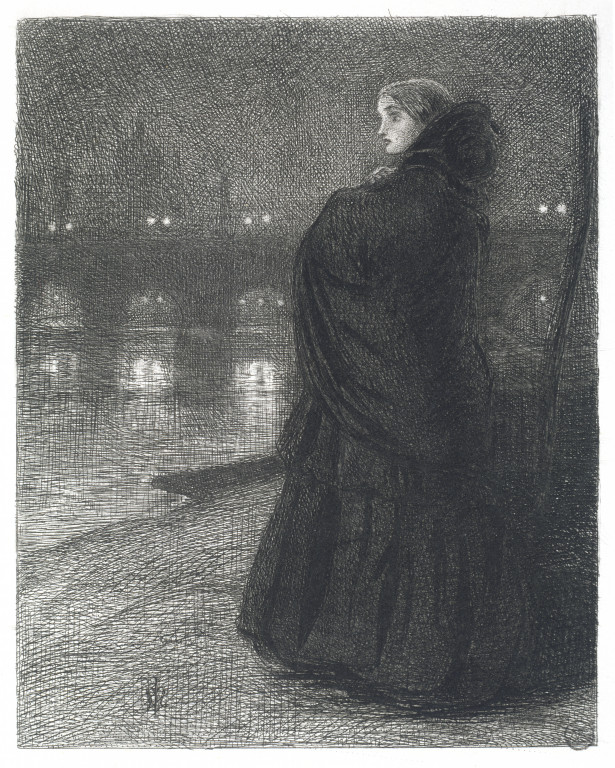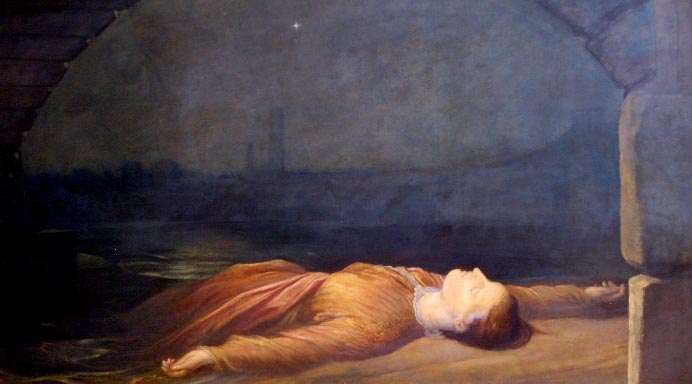The Bridge of Sighs is delicate, full of pathos, and represents the plight of any young woman in the Victorian era who has been unfortunate enough to lose her virtue. This brings to mind the double standard that persists in many cultures to this day: no one seems to mourn a male who loses his virtue, yet a female with a past is forever tainted.

Based on the poem by Thomas Hood, The Bridge of Sighs describes a young woman who commits suicide by plunging to her death from Waterloo Bridge. The poem hints that the woman was thrown out of her home due to an illegitimate pregnancy, a common occurrence that was severely frowned upon by Victorian society. Such a pregnancy was seen as a disgrace to an entire family and often parents felt that there was no other choice than to shun their daughter and cut off contact completely.
To be an unwed mother was a fate worse than death, as cliche as that sounds. Had she lived to give birth to her child, she faced destitution and life as a social pariah. However, her death in the poem restores both her beauty and innocence, as we see in this passage:
Make no deep scrutiny
Into her mutiny
Rash and undutiful:
Past all dishonour,
Death has left on her
Only the beautiful.
Sadly, a death such as this is not seen only in poems and fiction. Reports of young womens’ bodies found drowned were common in newspapers of the time, which seems to have been a source of inspiration for G.F. Watts’ painting Found Drowned.

In Found Drowned, Watts shows the deceased woman under Waterloo Bridge, her legs still dangling in the Thames. A locket rests in her hand. Although the city in the background is partially masked by fog, a single bright star can be seen in the sky. One cannot help but stare at her lifeless body and outstretched arms.Although intended for a Victorian audience, we should still feel deep empathy in Watts’ subject. This is such a waste. That a society could be so structured and so rigid that those who in the most need of help and compassion felt that their only recourse was death.
In she plunged boldly—
No matter how coldly
The rough river ran—
Over the brink of it,
Picture it—think of it,
Dissolute Man!
Lave in it, drink of it,
Then, if you can!Take her up tenderly,
Lift her with care;
Fashion’d so slenderly,
Young, and so fair!


The fate of ‘fallen women’ is truly one of the saddest things about Victorian society. It does seem that both artists and writers were sympathetic to their plight as shown by the works you have referred to. There is also that heartrending scene in David Copperfield where David bumps into ‘little Emily’ who has been ruined by Steerforth. I think Dickens set up a home for ‘fallen women’. It’s interesting that in the French Lieutenant’s Woman (the book not the film where they changed the details), the woman, after she has the brief affair with the man and becomes pregnant, flees to London, she ends up wandering the streets and is befriended by Rossetti who gives her a home, makes her one of his models and even teaches her art!